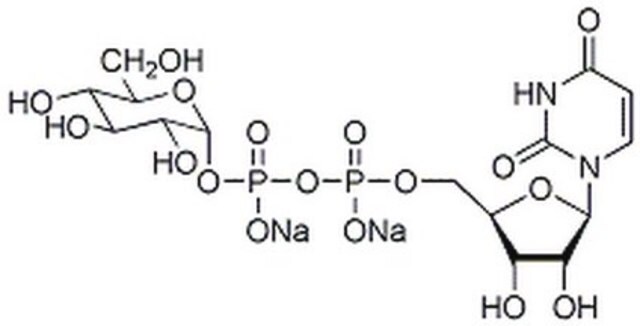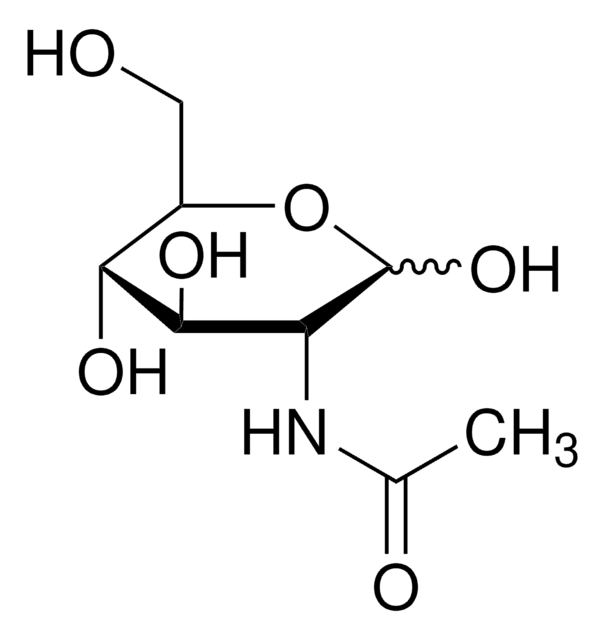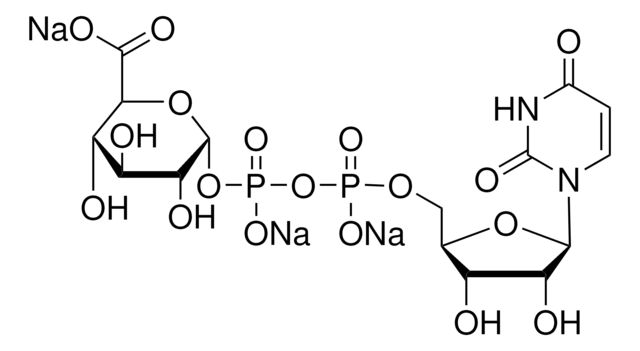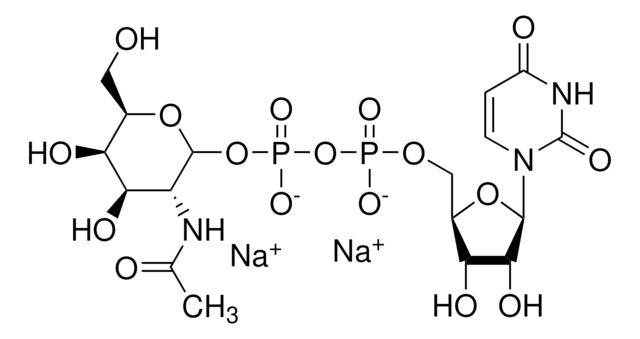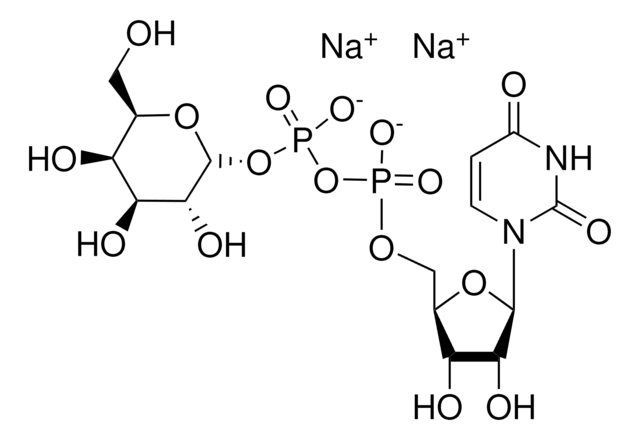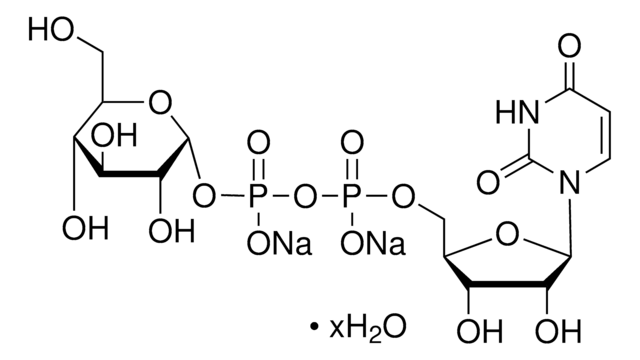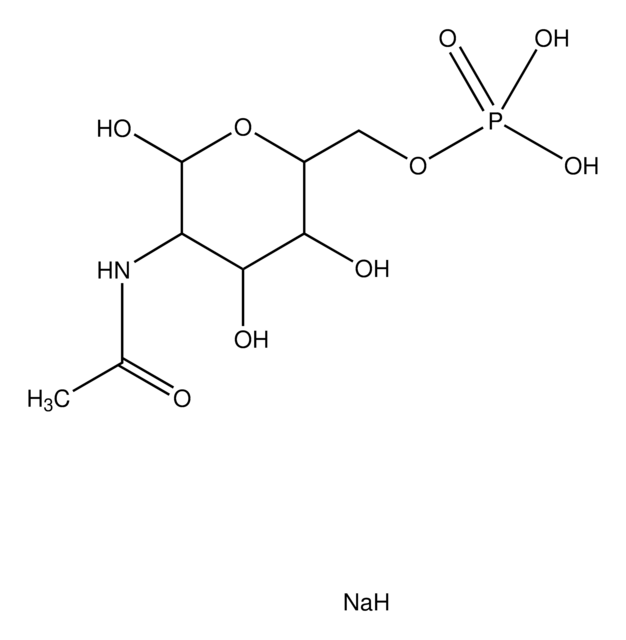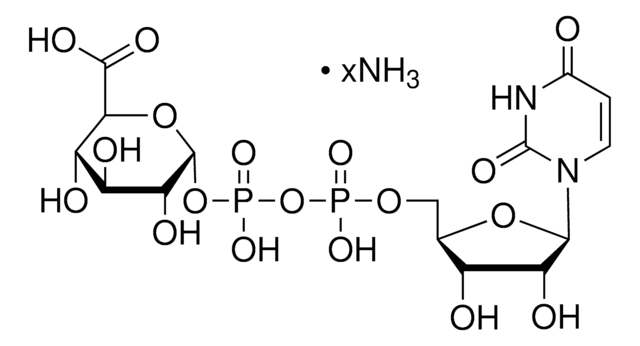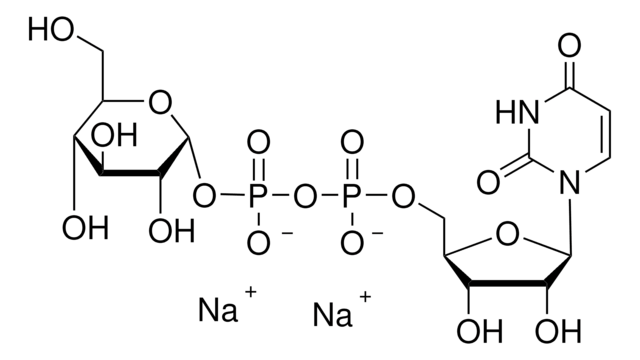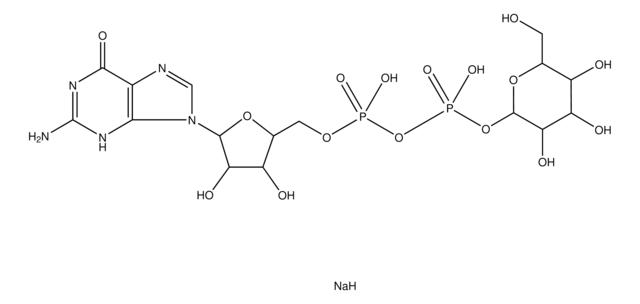U4375
Uridine 5′-diphospho-N-acetylglucosamine sodium salt
≥98%
Synonym(s):
UDP-GlcNAc, UDP-N-acetylglucosamine, UDPAG
About This Item
Recommended Products
biological source
bakers yeast
Assay
≥98%
form
powder
storage temp.
−20°C
SMILES string
[Na+].[Na+].CC(=O)N[C@@H]1[C@@H](O)[C@H](O)[C@@H](CO)O[C@@H]1OP([O-])(=O)OP([O-])(=O)OC[C@H]2O[C@H]([C@H](O)[C@@H]2O)N3C=CC(=O)NC3=O
InChI
1S/C17H27N3O17P2.2Na/c1-6(22)18-10-13(26)11(24)7(4-21)35-16(10)36-39(31,32)37-38(29,30)33-5-8-12(25)14(27)15(34-8)20-3-2-9(23)19-17(20)28;;/h2-3,7-8,10-16,21,24-27H,4-5H2,1H3,(H,18,22)(H,29,30)(H,31,32)(H,19,23,28);;/q;2*+1/p-2/t7-,8-,10-,11-,12-,13-,14-,15-,16-;;/m1../s1
InChI key
HXWKMJZFIJNGES-YZVFIFBQSA-L
Related Categories
General description
Application
- as a component of reaction cocktail in endoplasmic reticulum to Golgi transport assay
- as a reference standard for the quantification of UDP-GlcNAc in liver tissues using high-performance liquid chromatography (HPLC)
- in testing the glycosylation activity of O-GlcNAc transferase (OGT) against peptide substrate
Biochem/physiol Actions
Storage Class Code
11 - Combustible Solids
WGK
WGK 3
Flash Point(F)
Not applicable
Flash Point(C)
Not applicable
Personal Protective Equipment
Choose from one of the most recent versions:
Already Own This Product?
Find documentation for the products that you have recently purchased in the Document Library.
Customers Also Viewed
Articles
The presence of multiple functional groups and stereocenters in complex carbohydrates makes them challenging targets for the organic chemist.
Glycosyltransferases were initially considered to be specific for a single glycosyl donor and acceptor, which led to the one enzyme-one linkage concept. Subsequent observations have refuted the theory of absolute enzymatic specificity by describing the transfer of analogs of some nucleoside mono- or diphosphate sugar donors.
Review article and products for sialic acid synthesis and signaling.
Our team of scientists has experience in all areas of research including Life Science, Material Science, Chemical Synthesis, Chromatography, Analytical and many others.
Contact Technical Service
